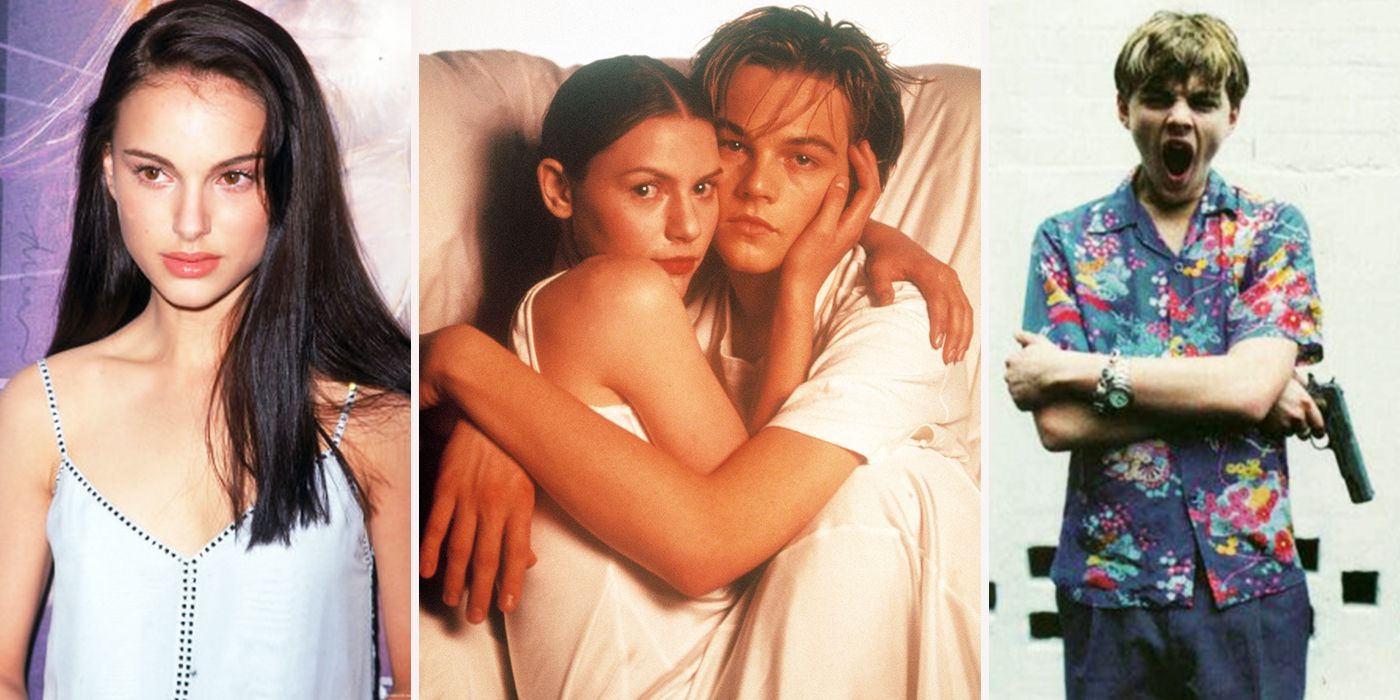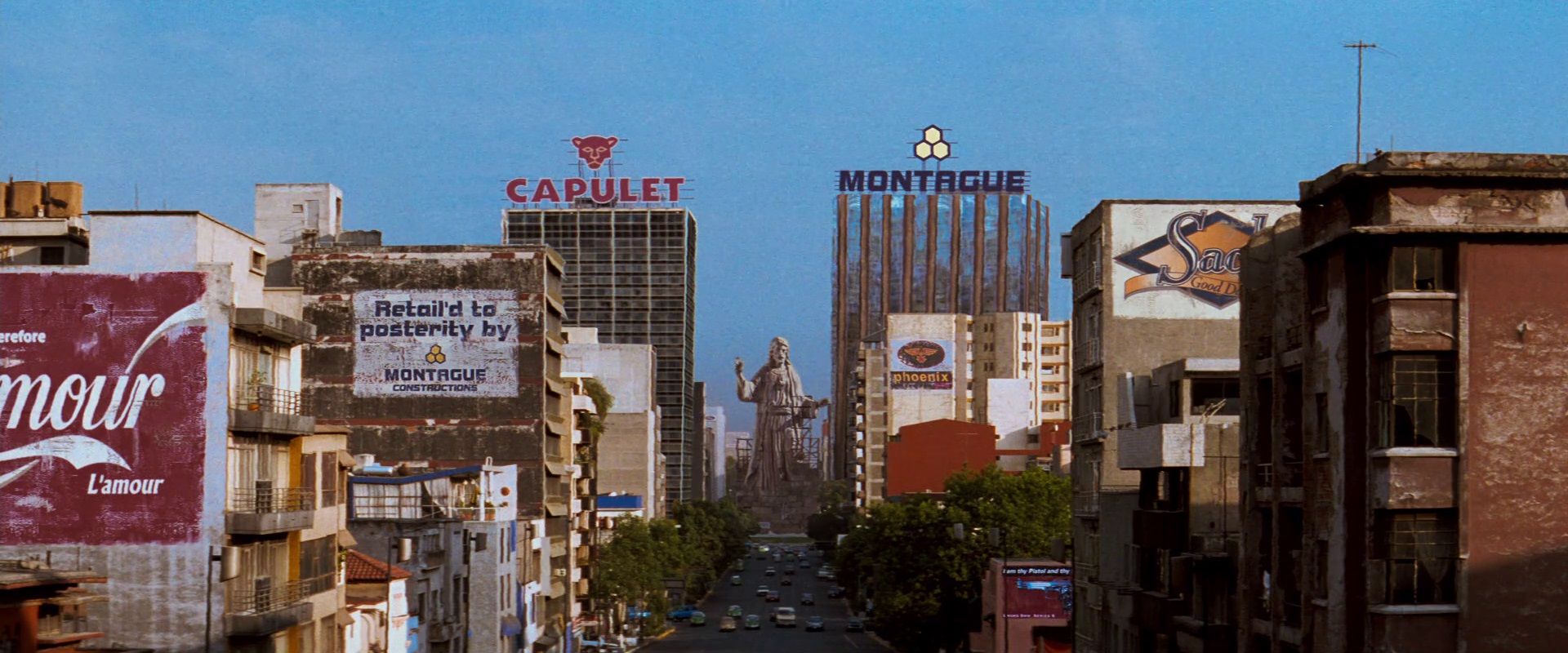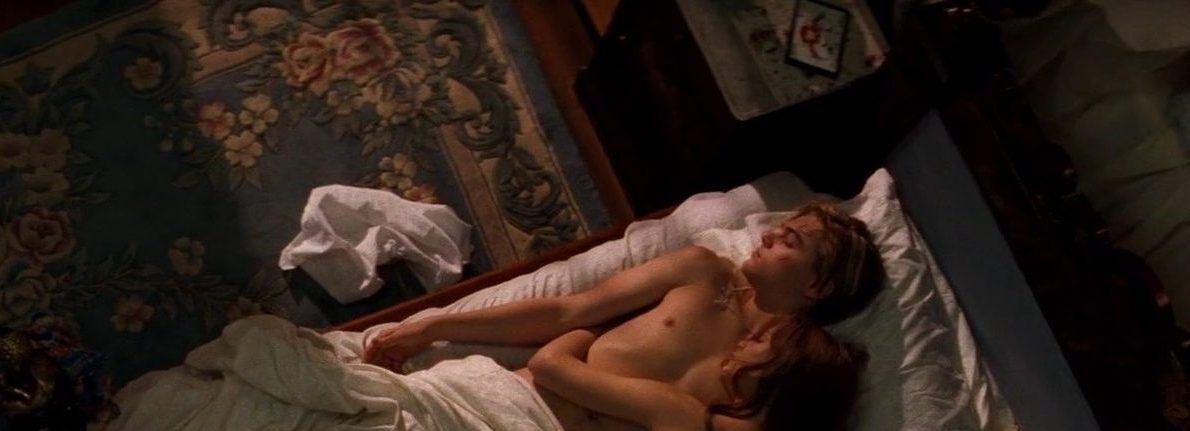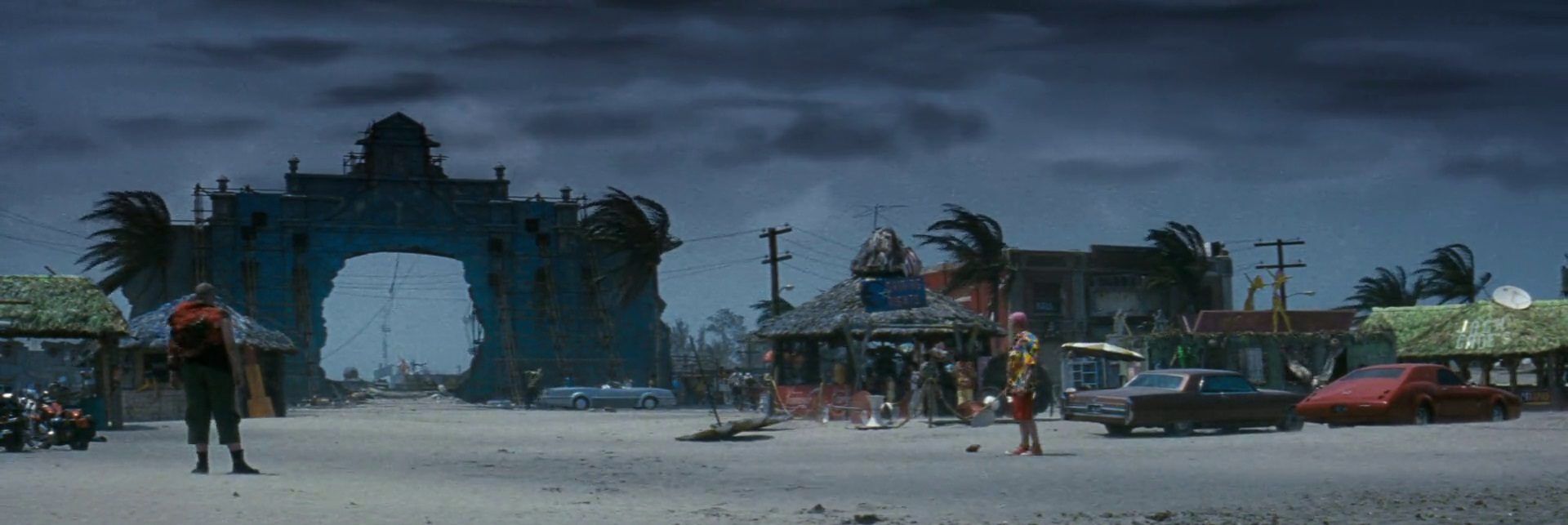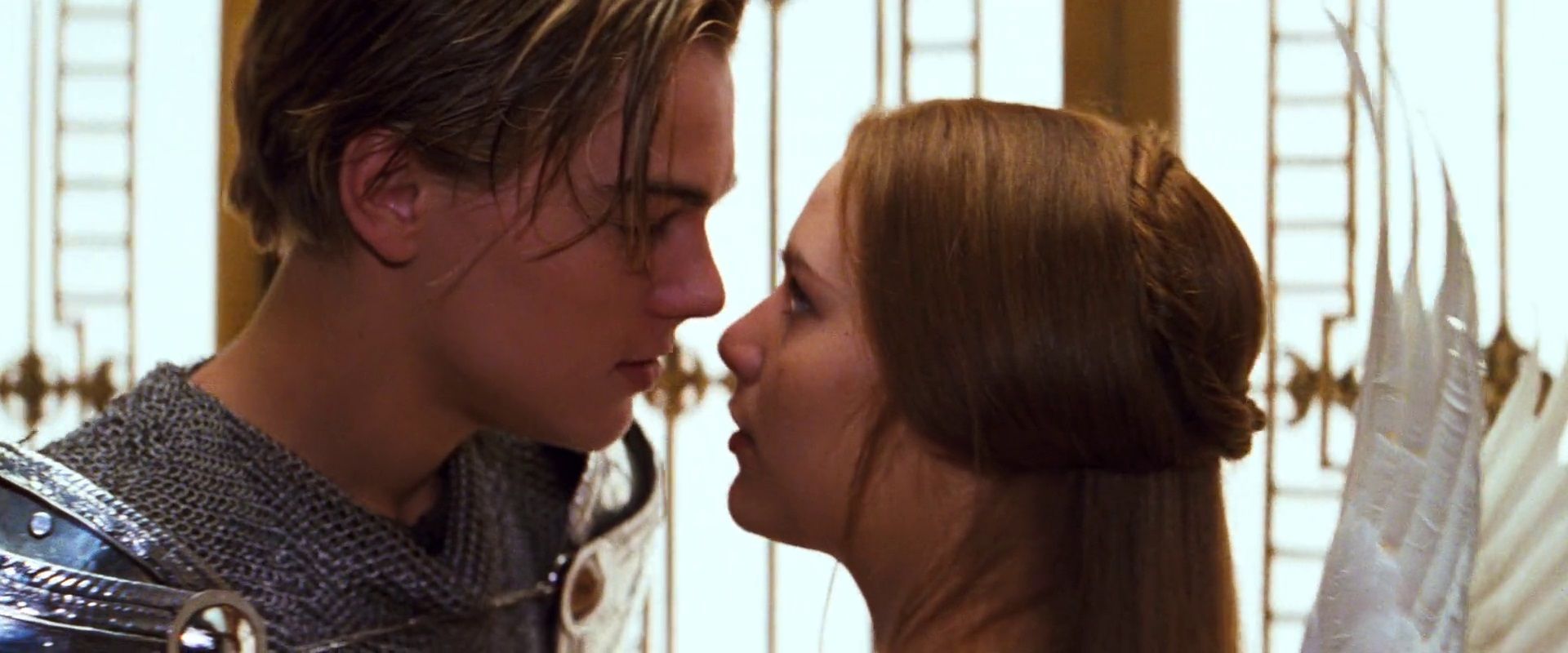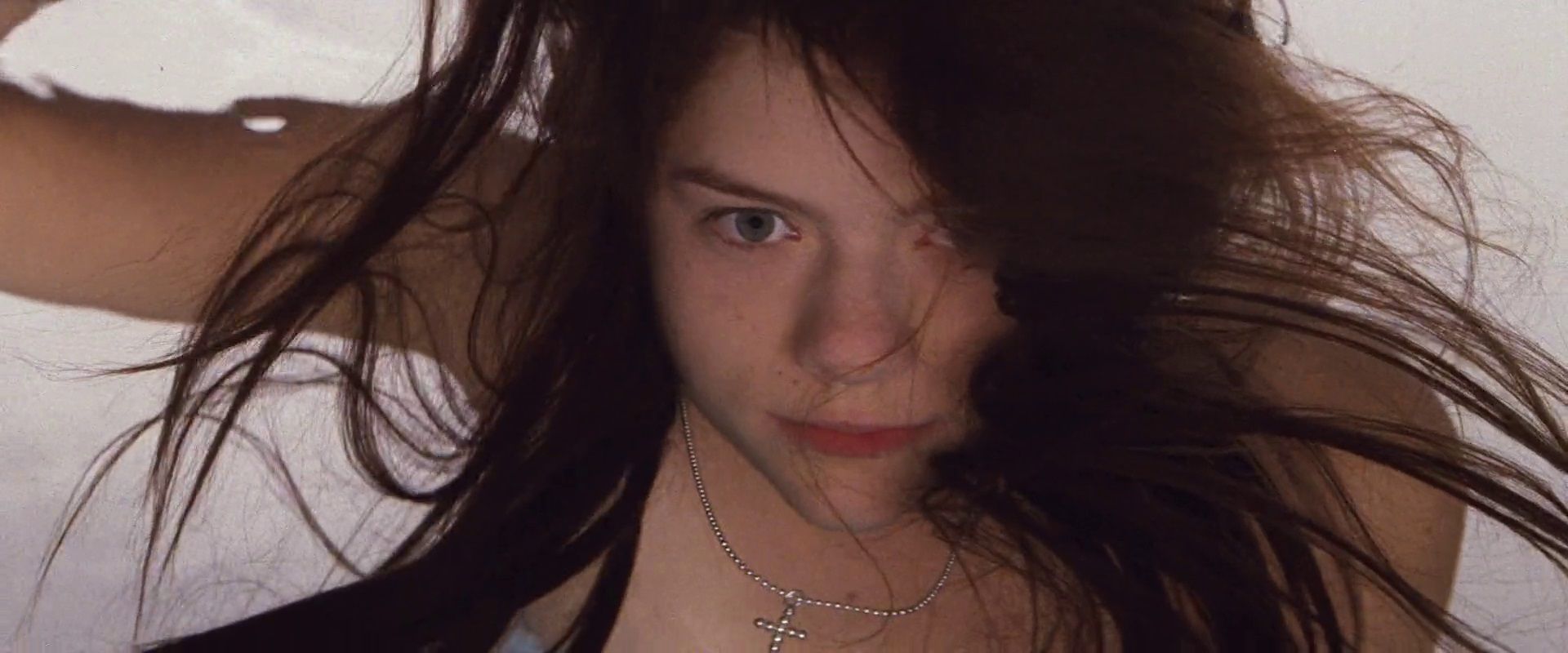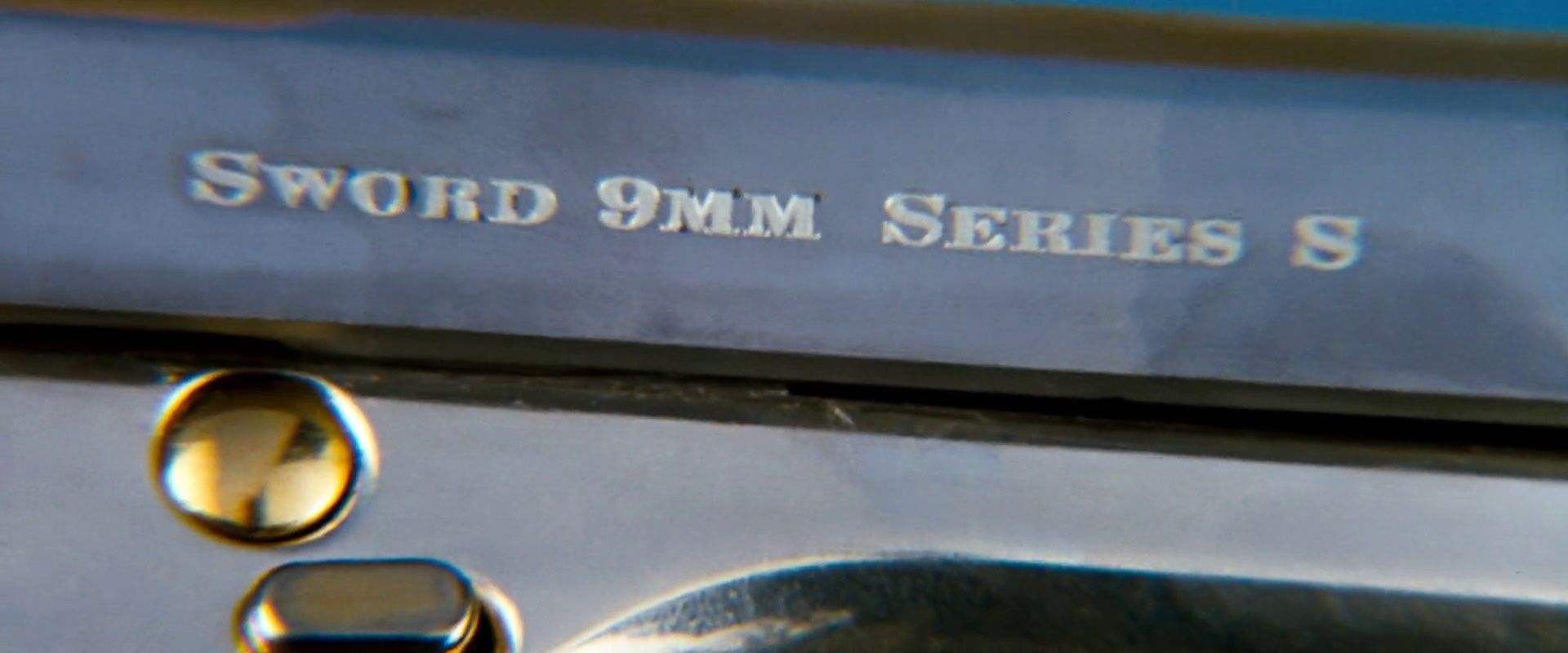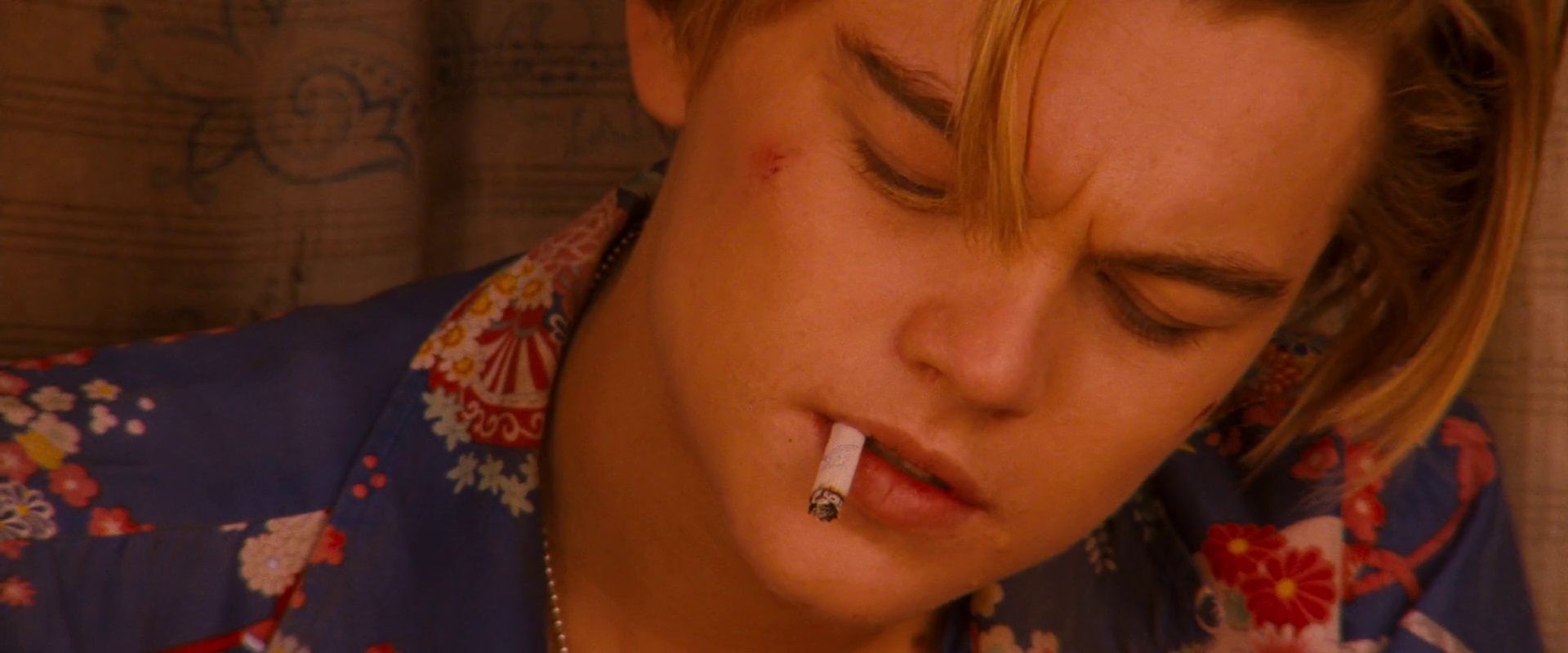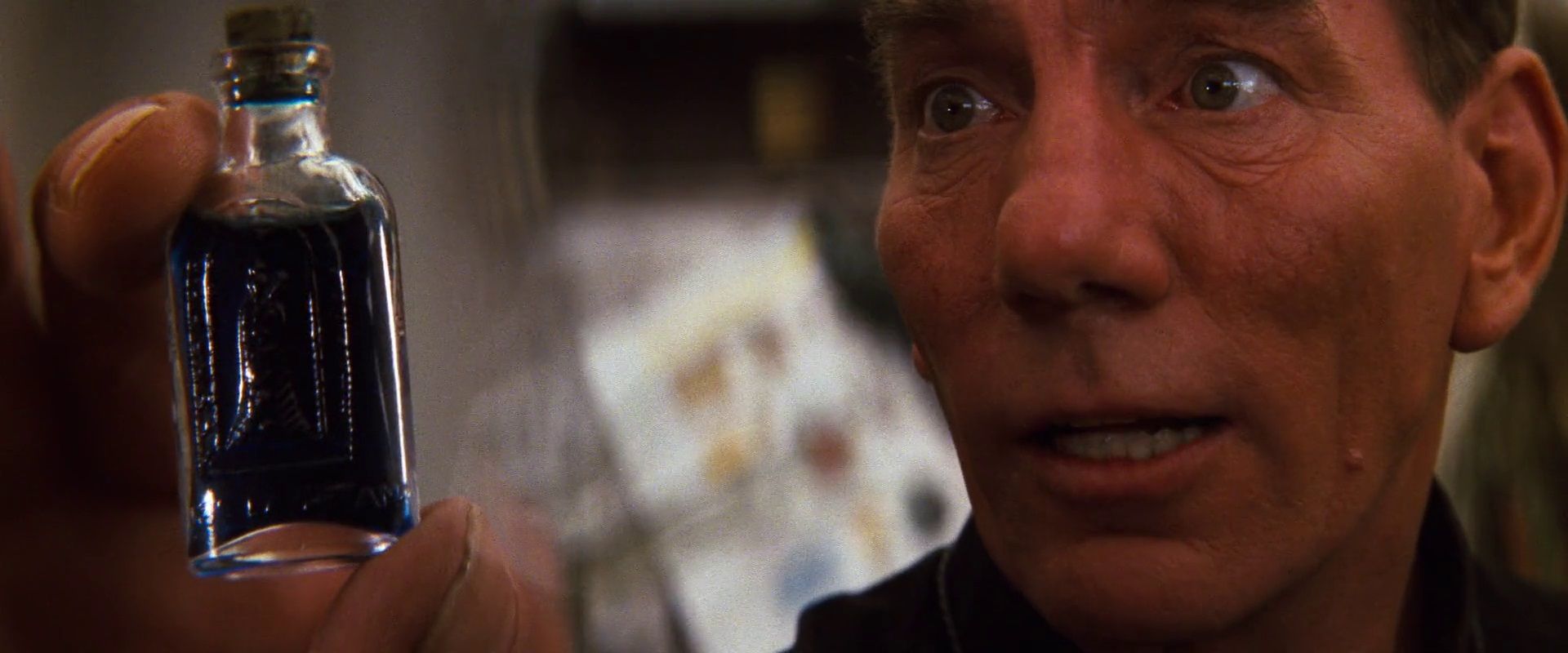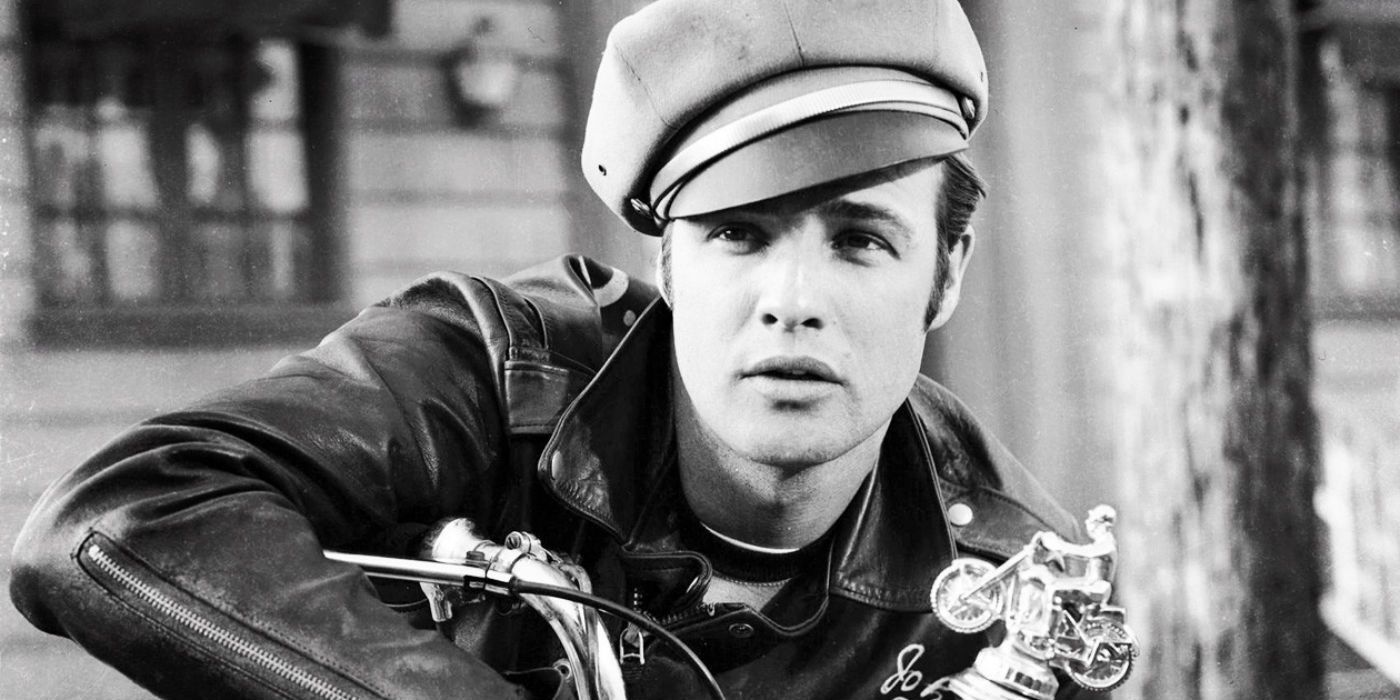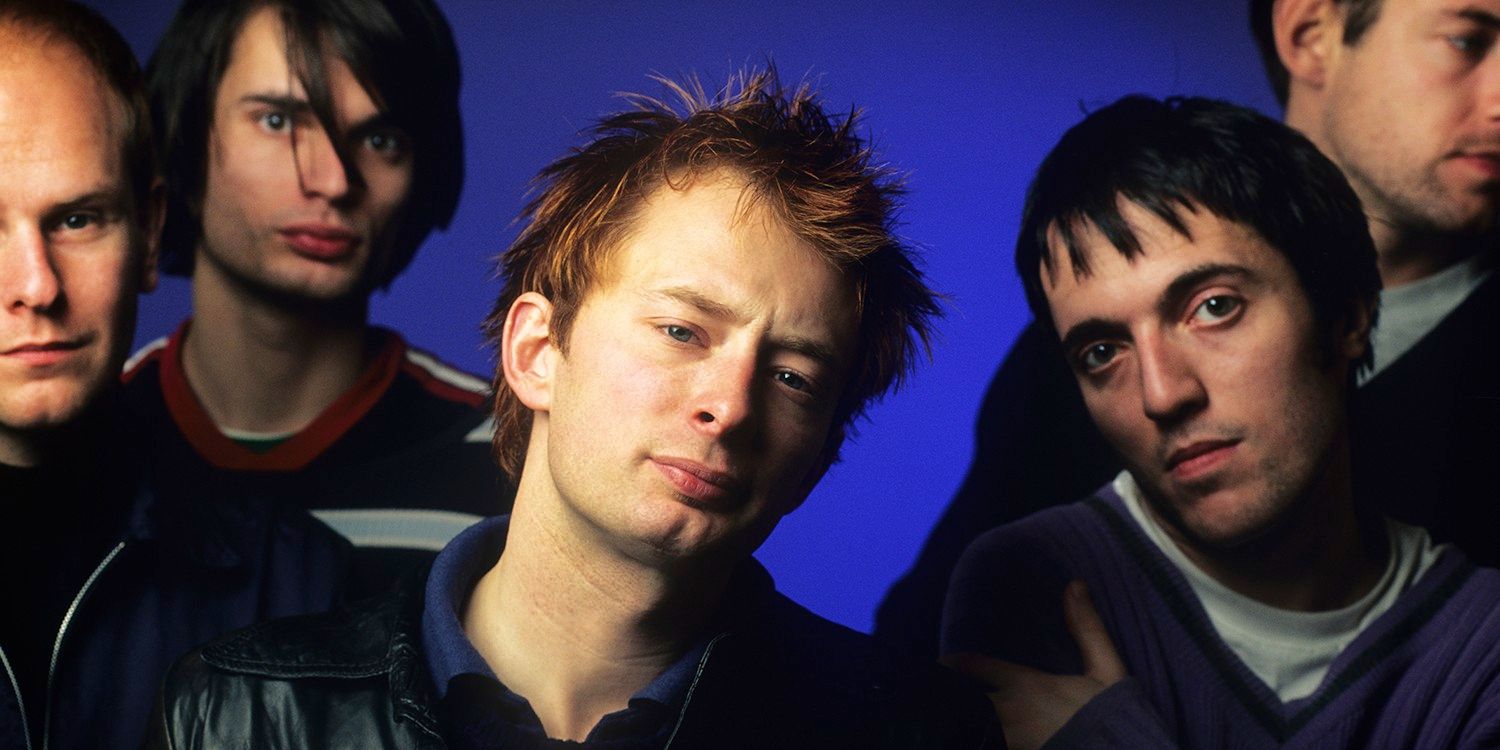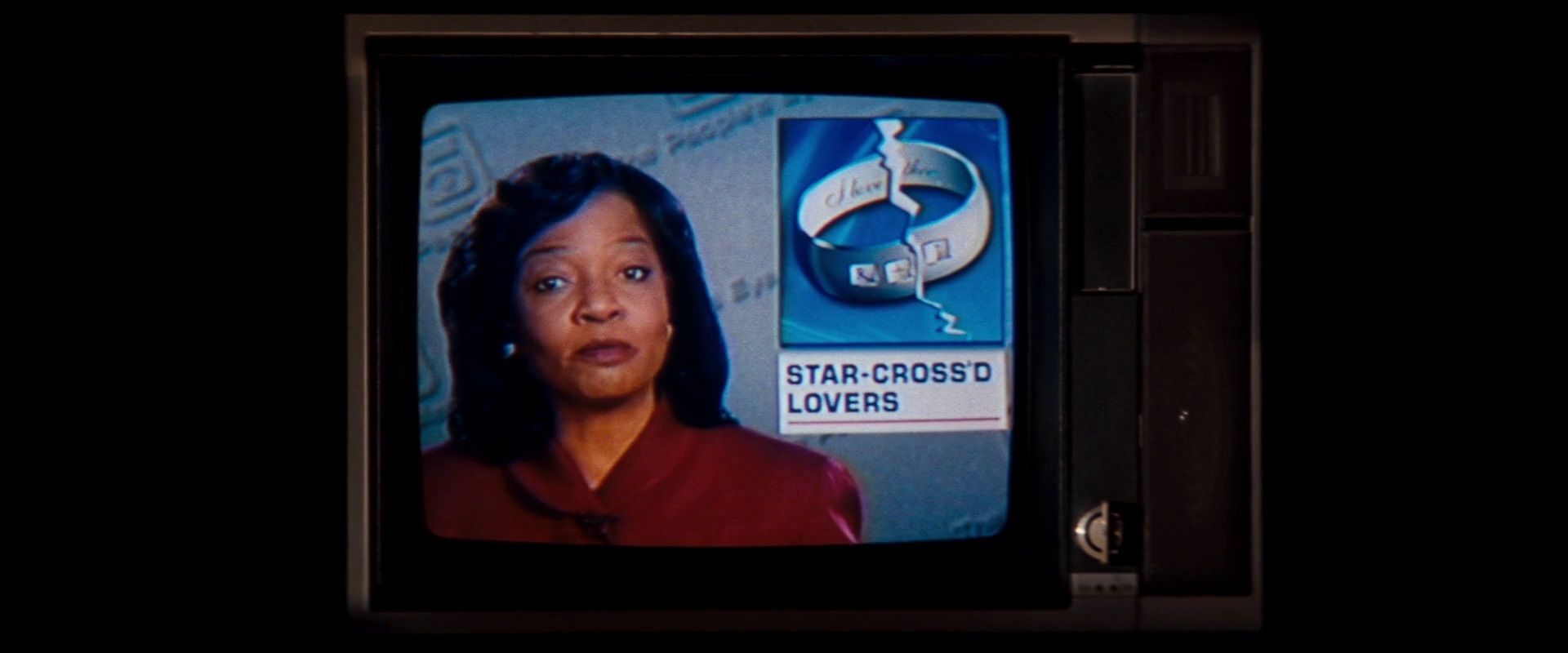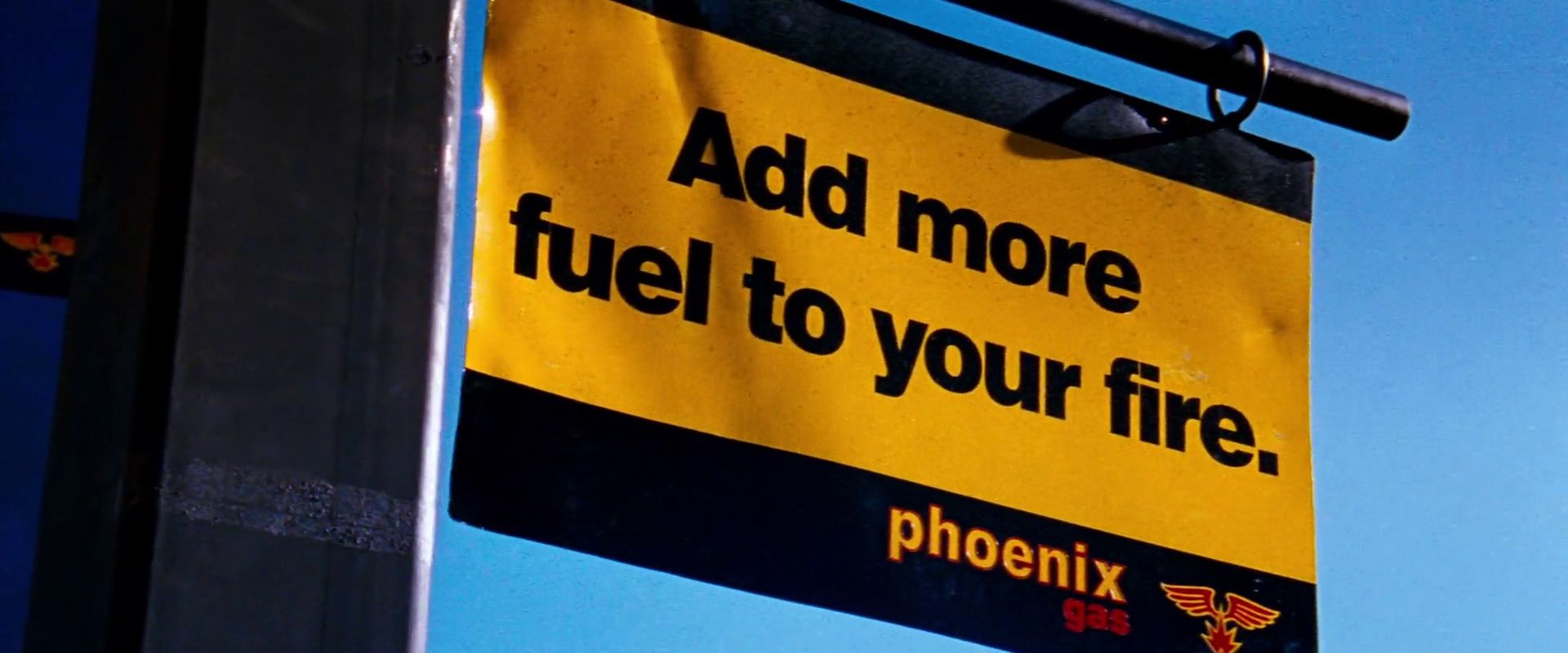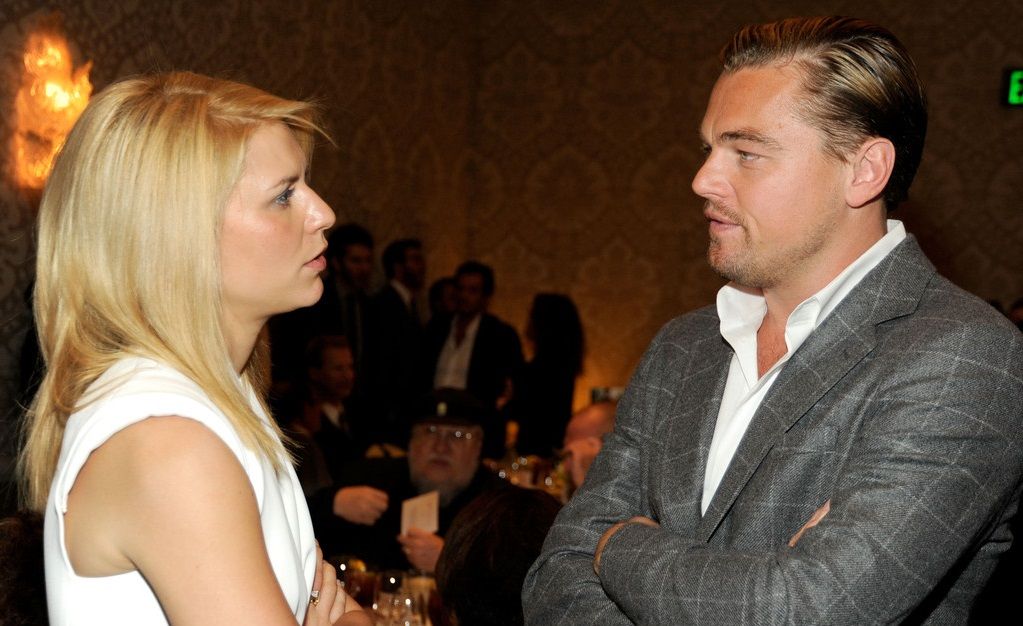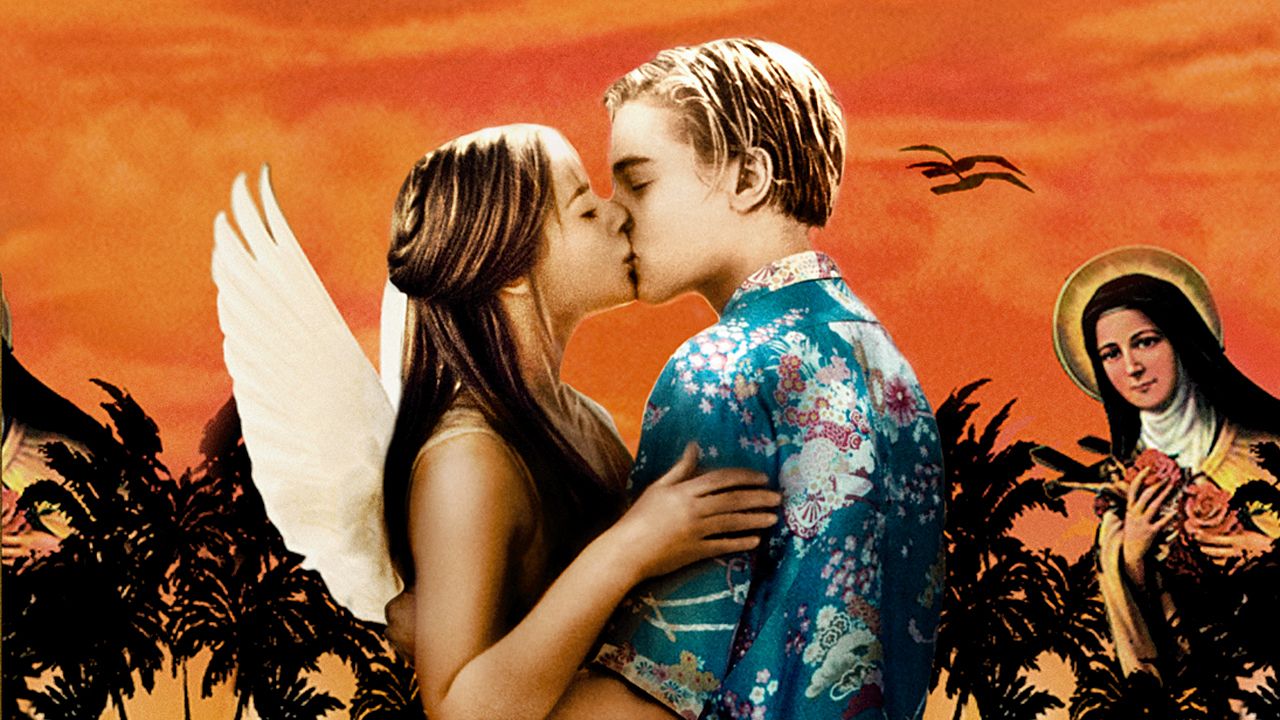William Shakespeare, a name that conjures up images of people on a stage, actors giving extremely long monologues, and lots, and lots, of characters dying by the end of it all. For many centuries, the works of the great Shakespeare have been read and enjoyed but just about everyone the world over. Due to the way stories can be taken and interpreted, his works found their way in a variety of places, such as retellings and adaptions, some of which strongly resemble the original work, and others that stray from the source. Heck, Hey Arnold! even had an episode where they perform Romeo and Juliet.
Before we mention that episode of Jimmy Neutron where they perform Macbeth in Space, let us get to the matter at hand: Baz Luhrmann’s flamboyant Romeo + Juliet, a movie as faithful to Shakespeare as it is polarizing to everyone who comes across it. It was the director’s international breakthrough, as well as a massive hit, allowing him to make Moulin Rouge!, which only made him more popular and acclaimed.
In celebration of that, we’ve compiled a list that covers a variety of facts and trivia about the making of Romeo + Juliet, which includes a kidnapping, references to other works, and possible casting choices, as well as the dedication some of the actors in question had to their roles.
Here are 16 Secrets Behind The Making Of Romeo + Juliet.
16. The film was shot primarily in Mexico
Taking place in a fictional version of Verona likely not in Italy (let alone anywhere in Europe) gave way for Luhrmann and company to create their own version of the fabled city. The movie was shot in a variety of locations, most of which were in Mexico.
Mexico City, along with Veracruz, were some of the locations most used, and can be easily identified in shots showing off the city.
There are also the shots in the desert, along with plenty of beach fronts and composites to better create the fictional version of Verona. Additionally, the Capulet mansion in the film is the Chapultepec Castle, located in Mexico City on Chapultepec Hill.
As a result of shooting in a variety of locations (as well as the strong use of sets), the film gives off a very strong theatrical vibe, especially when nearly everything on screen looks like it was made exclusively for the movie. Even when characters are at the beach, the huts that surround them (as well as the abandoned theatre stage) all seem uniquely Verona.
The use of specific props also helps sell the existence of Verona, such as license plates on vehicles, vehicles themselves, and assorted billboards and signs, not to mention all the religious iconography and Jesus statues.
15. Hair stylist Aldo Signoretti was kidnapped
Aldo Signoretti is a hair-stylist who has been in the game for quite some time. He started in the 1970s and has worked on a decent amount of Italian films, as well as more Hollywood flicks. Suspiria is one of the highlights of this era, as is the Robert Altman-directed Popeye from 1981. Other major works include Cliffhanger (for Mr. Stallone), Gangs of New York, and Troy. He even got three Academy Award nominations for Best Makeup: Moulin Rouge! in 2002, Apocalypto in 2006, and Il divo in 2010.
The making of Romeo + Juliet is said to have been a bit chaotic, for various reasons. However, one of the most bizarre (and dangerous) things to have happened on set was the kidnapping of Signoretti.
Why anyone would kidnap the key hair dresser for a film is likely not an easy question to answer, but it likely also isn’t as important as maybe just stealing someone—anyone—from a movie set for cash.
According to Luhrmann, the kidnappers asked for a mere three hundred dollars to get Signoretti back.
Thankfully, it was “a bargain” for Luhrmann and company, so they were able to get Signoretti back no problem, though he apparently broke his leg in the exchange process.
14. The first scene that was shot
Romeo and Juliet first meet when they’re hanging out in the bathrooms that are, for whatever reason, divided by a large fish tank. From there, Romeo tries to go after her, though she keeps getting held up by her mother, nurse, and Paris. The two are able to exchange words, but other than kissing a lot, not too much happens in the realm of physical activity between the two.
Eventually, after a series of unfortunate events, they consummate their feelings. By this point, their relationship is its most intimate, and they seem more than comfortable with each other, playing around, and appearing quite in love.
It's funny to think this was the first scene Danes and DiCaprio shot together— as a way to “break the ice,” apparently. The “morning after” features the two characters in bed next to one another. Using a scene such as this to get the actors comfortable with one another is actually pretty genius, as it is likely the scene they would be most anxious about filming.
In any case, the acting from Danes and DiCaprio never implies this is actually the actual actors' first scene filmed together. They seem perfectly calm and in love.
13. The hurricane in the movie was real - and wrecked the set
There’s a very important moment in Romeo + Juliet when Tybalt comes after Romeo to, more or less, end him— or at the very least, challenge him in a fight. The Capulets and Montagues are ready for a brawl, but it mostly just involves Tybalt attacking Romeo, who no longer wants to fight due to his marriage to Juliet.
However, Romeo’s best friend Mercutio attacks Tybalt, which results in Tybalt stabbing Mercutio when he isn’t looking. At first he says it’s just a scratch, but after really looking at it, he realizes he’s basically done for.
As he curses the houses of Montague and Capulet, a storm thunders not too far from them.
What many don’t know is that there really was a storm occurring— a hurricane, in fact. The wide shot of Romeo stepping away from Mercutio’s husk and running to his car to chase Tybalt was done while the hurricane was approaching. However, the storm didn’t just make shooting a bit problematic, it demolished the sets entirely.
Luhrmann said the actors were enthusiastic to keep filming the scene, so they did. But the beach sets that were all created for the film “were completely blown away by the hurricane.”
12. The trick of the elevator scene
When it comes to scenes in film that take place in very tight spaces, it can be understandably difficult for the crew to shoot the scene in question. Depending on what they want to do, the filmmakers might have to invent some new way to best achieve the results they’re looking for.
For the scene where Romeo and Juliet share their first kiss in the elevator, the crew had to come up with an effective way of shooting in a tight elevator. Shooting inside an actual elevator was likely too much of a challenge, so something else had to be done. Considering the scene has the camera circle around the characters, a regular viewer could only guess to how the effect was successfully achieved.
As it turns out, building your own makeshift “elevator” for the purpose of shooting a specific scene does the trick.
The actors stayed within the prop set as the crew circled around them, lifting up parts of the set that would be off camera as they went along. While plenty of noise was made during the filming of the scene, the actual scene itself doesn’t have any of that, and the end result is an impressive display of how filmmakers can come up with creative ways to shoot a scene.
11. Claire Danes wore a wig throughout (plus a special wig for underwater scenes)
Claire Danes has pretty great hair (as her starring roles in Homeland and My So-Called Life demonstrate), and in the role of Juliet, she had to make sure her hair was looking swell to keep up with Leo’s own blond locks. This is probably why she was actually wearing a wig.
Juliet’s hair plays a fascinating role in the film, since the first time we get a glimpse of her is when she has her head submerged in water, featuring her hair all over the frame as her face is front and center.
What’s really cool to know is that Danes had a special wig for scenes involving water. While it’s likely that same wig was used in her introductory scene, it was most definitely used when Romeo and Juliet are playing in the pool. It’s extremely impressive how no one would even know, given that wigs can look exactly like real hair—or at least they can with the help of movie magic.
Probably the most impressive aspect is the fact that the wig was created with water in mind, an important detail, considering how important water is for the pool scene and in question, along with other very important scenes and moments.
10. Natalie Portman tried out for Juliet, but it (infamously) didn't work out
Before Star Wars: Episode I – The Phantom Menace, Natalie Portman was mostly known for appearing in Leon: The Professional. She was, at the time, barely a teenager, but quite the actress already, as anyone in the movie business surely took note of. As a result, it’s no surprise she was up for the role of Juliet, and she likely would have done really well in the role.
However, this wasn’t meant to be. While we all know Claire Danes ended up being Juliet, Portman did try it out with DiCaprio, to see if the chemistry would be just right.
As it turns out, it wasn’t: Portman and DiCaprio were about seven years apart, and apparently, it looked as if DiCaprio was being less than romantic when approaching Portman in a “romantic” manner.
Essentially, it just didn’t seem right, so Portman didn’t go through with it. While it definitely made sense at the time, it’s interesting to think if this sort of thing would have worked better under a different set of circumstances. It definitely would have made the film more risqué and “edgy” had they gone along with Portman, but it was probably risky enough that she had been in Leon: The Professional.
9. The guns are named after swords
One of the interesting things about Luhrmann’s adaption of an older play is that he decided to essentially keep a lot of it intact. That means characters will yell at each other and hold grudges and even brawl in a way that maybe they wouldn’t quite be doing in the 20th and 21st centuries. Even so, Luhrmann stuck with it, and due to his adaption being set in the late 20th century, his characters aren’t carrying literal blades around - though it can also be argued they may as well had been.
Instead, the characters carry around firearms, mostly pistols, some of which have the family emblems on them, as well as religious imagery, depending on the character. However, due to the dialogue sticking to Shakespeare’s prose, no one ever says “gun” or anything of the sort. Instead, they say sword, and other variations.
In one instance, Ted Montague (during the third civil brawl) tries to go for his “longsword,” which takes the appearance of a shotgun.
Other examples include Benvolio’s sword, Tybalt’s rapier, as well as dagger by a few other characters (such as Mercutio). It likely doesn’t work for every audience, but in the context of “contemporary Shakespeare,” it works a lot better than it probably should have.
8. Leo was the only pick for Romeo, and helped finance the movie
While getting someone like Leonardo DiCaprio for the role of Romeo seems like excellent casting in retrospect, Luhrmann apparently didn’t even know who DiCaprio when he was developing Romeo + Juliet.
The story goes that Luhrmann was looking for his Romeo, and at some point came across a paparazzi photo—not a head shot or anything professional, something more candid and tabloid friendly. He saw DiCaprio and knew that that was the look they were looking for, that the boy in the photo was indeed the Romeo they wanted. “If only he could act” lamented Luhrmann then. Soon, however, he’d come to learn that DiCaprio could indeed act and was very enthusiastic about the film.
So enthusiastic was young DiCaprio that he went to Australia on his own dime to help finance the movie, bringing along friends, as well. “He did a video workshop, so we could persuade the studio to do it. He was extremely passionate about it.”
Even though DiCaprio was an up-and-coming heartthrob, it’s interesting to know he was willing to invest his own time and money into making sure such a movie got made.
Just another example of an actor’s commitment.
7. Only one actor speaks in iambic pentameter
If you’ve ever read a Shakespeare play, you may have noticed the way the text is written. To bring it into the comparison of lyrics to a song, Shakespeare often wrote dialogue in such a way, so that sentences start but continue with a rhythm. This is something that’s often seen in poetry, including narrative poetry and epics. Indeed, the act of rhythm is intentional— Shakespeare employed blank verse, often in iambic pentameter.
When spoken out loud, the dialogue almost sounds like a song, with characters almost rhyming (and occasionally, actually rhyming). So other than the dialogue of Shakespeare being intensely poetic, with multiple meanings, metaphors, and so on, it was also meant to have a noticeable rhythm to it all.
The way the dialogue is portrayed in Romeo + Juliet is, for the most part, not always iambic. Truth be told, the dialogue is often (intentionally) recited as it were normal conversation, which makes sense for most of the characters, as well as the scenes portrayed.
As it turns out, the only character that seems to be speaking in iambic pentameter is Father Laurence.
Played by Pete Postlethwaite, he brings a serious gravitas to the role, one that is emphasized greatly by his delivery of dialogue.
6. Marlon Brando was almost Father Laurence
This is an extremely interesting one— and even more interesting had it come to pass.
Marlon Brando continues to be a staggering figure in the world of cinema, an actor who is recognized as one of the medium’s greatest. On stage or on the screen, Brando is often seen as magnetic and engaging, as well as haunting and foreboding, depending on the movie. Among his many well-known works— all of which cover very different ground— are On the Waterfront, A Streetcar Named Desire (the play and movie), The Godfather (his most iconic role), Apocalypse Now, and Superman (where he played Kal-El’s dad, Jor-El).
The idea of such a strong presence in this film is pretty exciting, as it surely was for Luhrmann at the time. If DiCaprio wasn’t enough, having a name like Brando in your film would definitely give it at least a bit more credibility—or at least attention. However, it wasn’t meant to be.
Brando wrote to Luhrmann that he could no longer be considered for the part due to “personal family problems.”
At the time, Brando’s son was convicted in a criminal case, which involved his half-sister and the passing of her boyfriend. Family problems, indeed.
5. Baz Luhrmann personally asked Radiohead to write the ending song
During the mid-1990s, a little band called Radiohead was becoming ever more popular. After finding great success with the single “Creep”, Radiohead released The Bends in 1995 to overwhelming acclaim, and a couple years later, they’d release OK Computer, solidifying the band as a major force to be reckoned with.
But between all that, a couple things happened. For one thing, a B-side for the song “Street Spirit (Fade Out)” was used in the film: “Talk Show Host.” As can be implied, it was a song not many would have taken much notice of, but its use in the film was a bit of a big deal, as it gave the song an exposure it hadn’t had before.
Additionally, Luhrmann himself sent some clips of the movie to the band, as he wanted them to compose exit music for the film. This resulted in the properly titled song “Exit Music (for a Film)”, which, for whatever reason, was not included on the actual soundtrack for the film. It was, however, used on OK Computer, and the band said that composing “Exit Music” was a step further into the direction they would go in for that album, along with the later 2000 release Kid A.
4. Luhrmann made the film to smash "club Shakespeare"
As anyone who has seen Romeo + Juliet can attest to, it’s not exactly what many would consider “traditional Shakespeare.” And as it turns out, that seems to have been Luhrmann’s intention.
For many, there exists a perception that only a certain kind of people and person are allowed to enjoy and understand Shakespearean works. However, that’s a highly arrogant view to take, and if it were true, then they likely wouldn’t make so many high schoolers study Shakespeare.
Luhrmann, who had seriously studied Shakespeare previously, knew Romeo and Juliet was highly accessible to everyone, and knew he could put it in a highly stylized present and make it work for people. Not everyone has to love it, but that enough people do should prove his point well enough.
His adaption is one that actually shows up in schools as a result of keeping Shakespearian prose while also setting the action in a time more like our present.
With its combination of fast paced editing, contemporary music scattered about, the use of guns, and so on, Luhrmann wanted to prove that Shakespeare is extremely adaptable, and that the story of "a pair star-cross’d lover" could be just as impactful in the 20th century as it was in the 16th.
3. The many Easter eggs
Creating your own fictional setting often lends to creative environments. When many of the sets used are made up for the film you’re making, you’re free to have fun with it and make it something unique to the film. In the case of Romeo + Juliet, this is done to the extreme, since the setting is already fairly fictional - Verona is a real place, but Verona Beach isn’t - and is set in a world where 15th century living is alive and well in the 20th century.
A variety of advertisements and signs all over Verona Beach are actually references to other Shakespeare works.
One of the earliest ones at the Phoenix gas station that reads “Add more fuel to your fire,” a reference to a line in King Henry VI, Part 3.
There’s also a tagline associated with the Capulet corporation/family that reads “Experience is by industry achiev’d” from The Two Gentleman of Verona, and the Montague tagline “Retail’d to posterity” from Richard III. Then there are the gun ads, such as “I am thy Pistol and thy friend” (from Henry IV, Part 2) and “Shoot forth thunder” from (King Henry VI, Part 2).
Another fun one is the name of the pool hall Romeo and Benvolio visit: "Globe Theatre," a direct reference to the theatre where Shakespeare’s plays were performed in.
2. Danes and DiCaprio are still friends today
It’s extremely important that the two leads you have for your movie about a tragic romance between two very emotional people (never mind teenagers) are more than comfortable with one another. In fact, among the many complaints movie goers often have with any sort of film, chemistry among leads is a big one. Many a film— especially romance— is often ruined and disliked for having leads that don’t seem to like one another. At worst, a romance can seem extremely fabricated or overdone, becoming a mockery of what it represents.
For Romeo + Juliet, it was of utmost importance that the two leads had a good dynamic. For the most part, it seems Danes got along great with DiCaprio, and what’s better is that the two remained good friends even many years after.
As Danes put it, “in some ways, our dynamic is absolutely the same,” adding “time goes on, but those relationships just deepen and you start to build a little community.” It’s not unusual for actors to remain friends after a film (Luhrmann even got to work with DiCaprio again for The Great Gatsby), so it’s nice to hear Danes and DiCaprio are still on good, if not better, terms.
1. It's the highest grossing live-action Shakespeare adaption
Shakespeare has been adapted ad museum by this point. While just doing his plays was definitely something people continued to do, his stories would eventually be adapted in other ways. Then when movies became a thing, the adaptions seriously started happening.
Many of the greatest films ever made are adaptions of something, and Shakespeare is no exception - be it Laurence Olivier, Kenneth Branagh, or Franco Zeffirelli. Many of these adaptions have been critically acclaimed, while others have been panned, or merely seen as lesser. And we can’t forget any and all off-shoots that exist based around characters from the plays.
When it comes to the business of Hollywood, the film that reigns supreme is Romeo + Juliet - in the realm of live action filmmaking anyway (The Lion King actually wins overall). On a budget of about $14.5 million, the film made almost $150 million, a staggering gross considering the budget.
No doubt the contemporary setting and direction—along with starring the very marketable Leo DiCaprio—made sure this film was popular during the winter of 1996 and beyond. It even got multiple releases on home video, and has almost become something of a mainstay for English teachers all over.
---
Do you have any other trivia to share about Romeo + Juliet? Let us know in the comments!

